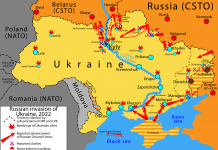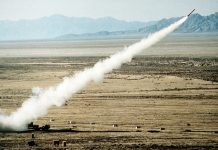
The region known as the Ukrainian Shield, stretching from Ukraine’s northern border with Belarus to the southern shores of the Azov Sea in Donbass, is believed to harbor significant lithium deposits within its ancient rocks. These findings, primarily concentrated around Mariupol, a port city in Donbass heavily damaged by Russian bombings, have drawn attention due to their potential. Research by the Ukrainian Geological Service has highlighted the area’s substantial lithium potential.
While lithium may not be the primary cause of the invasion, experts, including Rod Schoonover, former director of the U.S. National Intelligence Council’s Environment and Natural Resources Section, argue that Ukraine’s mineral wealth is a key factor in its geopolitical importance to Russia. The global interest in Ukrainian lithium grew notably in the year prior to the Russian invasion, which disrupted exploration efforts. For instance, in November, the Australian company European Lithium announced its progress toward securing rights to two promising lithium deposits in Donetsk and Kirovograd. Additionally, the Chinese company Chengxin Lithium sought rights to deposits in the region, marking a strategic move for China to secure the first European lithium source.
Despite the potential value of these lithium resources, Schoonover notes that the direct motivation for Russian attacks likely lies elsewhere. However, if the region were to fall under Russian control, lithium reserves could become an additional benefit for the Kremlin. On the global stage, however, importing lithium from a country like Russia, which faces international sanctions, would be highly problematic, especially given the availability of alternatives in more geopolitically stable nations.
Andrea Dini, an Italian geologist, has studied the region’s mineral deposits and participated in research campaigns in northern Ukraine. While some mines have historically yielded precious stones rather than lithium, recent research by the Ukrainian Geological Survey has identified areas rich in spodumene, a lithium-aluminum silicate mineral preferred for industrial extraction. Dini notes that pegmatitic rocks containing spodumene are valuable not only for lithium extraction but also for by-products such as quartz and feldspar, which are useful in the ceramics industry. Ukraine and Serbia are considered to have the highest lithium extraction potential in Europe.
Beyond lithium, Ukraine is rich in other critical mineral resources, including 10% of the world’s iron reserves, 6% of titanium, and 20% of graphite. The region’s geology is ancient, with much of its surface covered by sedimentary layers, yet beneath these layers, billions of years-old rocks hold valuable resources. Furthermore, Ukraine is home to a 400-million-year-old sedimentary basin in the northeast, rich in coal and methane, which could be strategically important for energy production, similar to the shale gas reserves in the United States.
In addition to minerals, Ukraine plays a key role in global industries like ceramics. The Italian ceramics industry, particularly in Sassuolo, relies heavily on Ukrainian clay and kaolin, especially from Donbass. Before the invasion, 25% of raw materials for Italian ceramics were sourced from Ukraine. As a result of the conflict, the industry must now seek alternative sources and develop new blends of materials to replace those previously imported from Ukraine.




